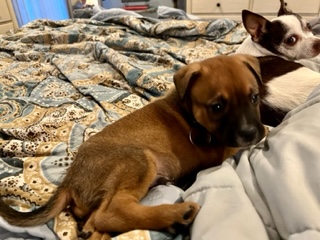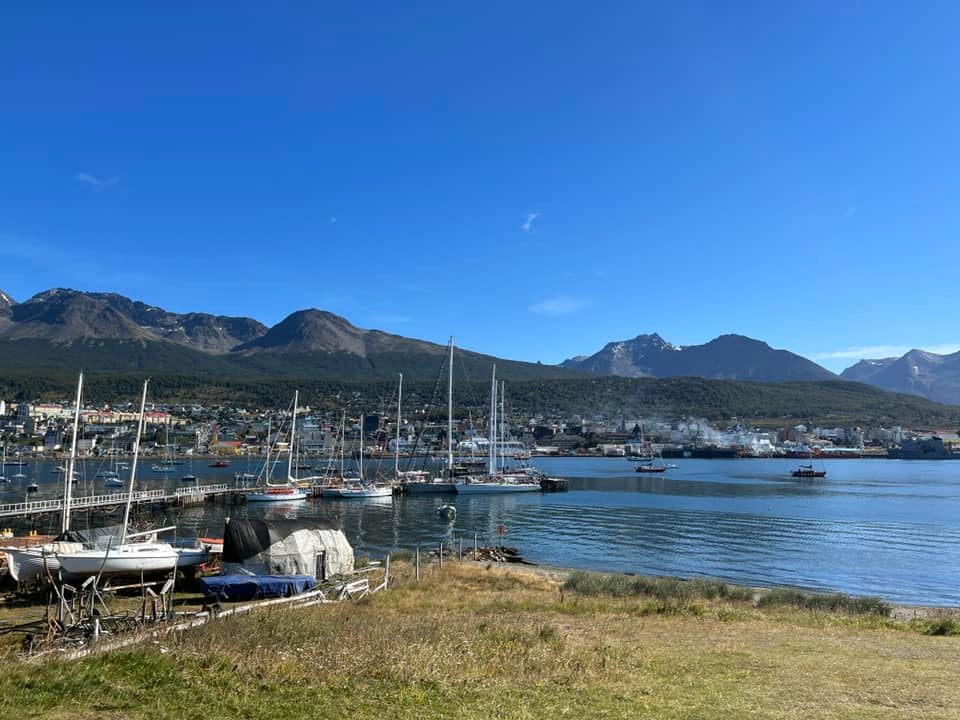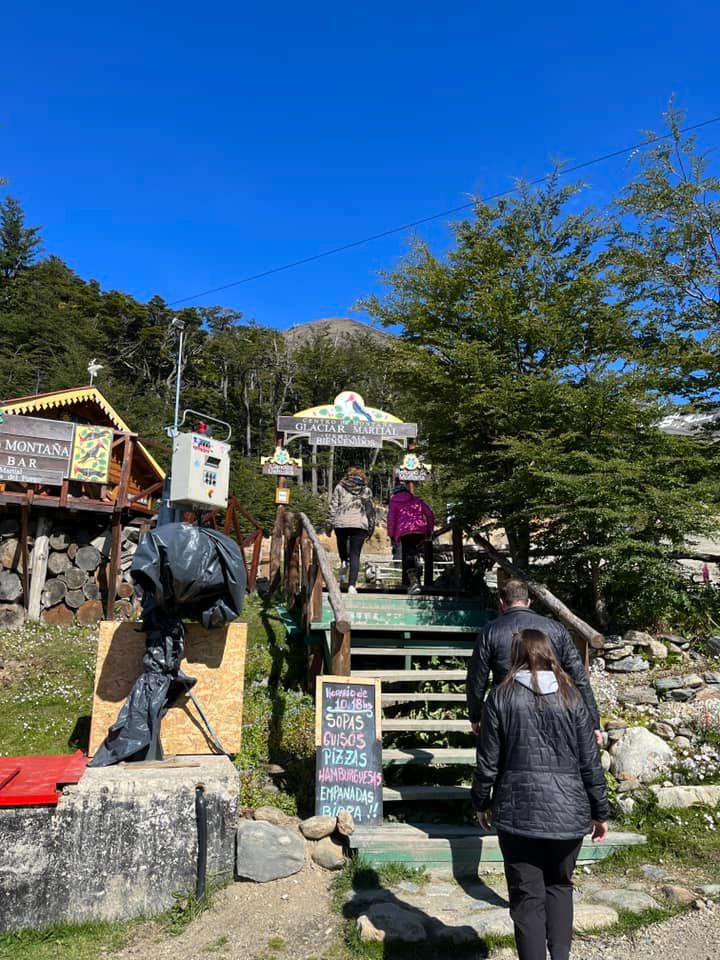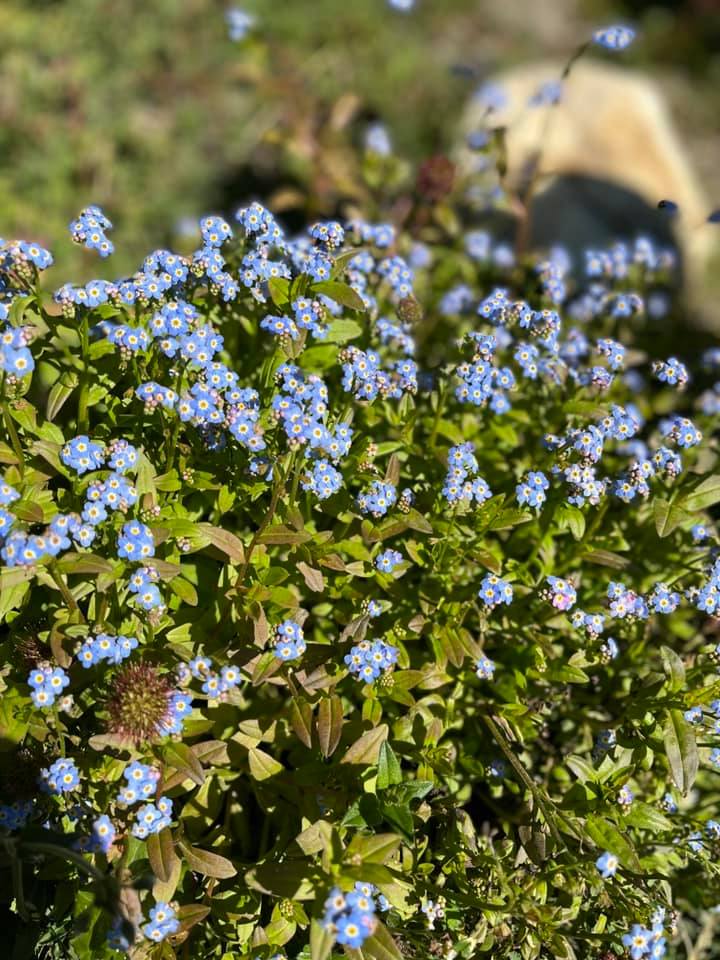Not mine - I'm only crate training! He's a cutie alright.
Home Again
Saturday, February 5, 2022
Wow! We got home last night and it was such a long journey that I’m in shell shock. We started the trek home the morning of Feb 4. We took a bus tour of Ushuaia on our way to the airport- the weather was so nice and it was fun to explore some of the local flora. Then we waited in the airport for about 3 hrs. Took a 4 hr flight to Montevideo and had to get off and go through another security clearance then reboard and fly to Miami (9hrs). From there we went through customs etc and flew to Atlanta- another flight to Charleston then a drive to SC. From there a 4 hr drive home.
A highlight of the trip was our seat companion Henry. Such a cutie little dog.
Today in Argentina
Friday, February 4, 2022
This evening we made it back to Ushuaia - the southernmost city in the
world. It's tucked between the Beagle Channel and the southernmost slopes of the Andes.
Ushuaia is the capital of and gateway to
the celebrated Tierra del Fuego, the "Land
of Fire," named by Spaniards upon seeing
the constant flames burned by the
indigenous Yámana to keep warm. This
largely unspoiled region comprises the
large island of Tierra del Fuego and
countless Chilean and Argentinean islands.
world. It's tucked between the Beagle Channel and the southernmost slopes of the Andes.
Ushuaia is the capital of and gateway to
the celebrated Tierra del Fuego, the "Land
of Fire," named by Spaniards upon seeing
the constant flames burned by the
indigenous Yámana to keep warm. This
largely unspoiled region comprises the
large island of Tierra del Fuego and
countless Chilean and Argentinean islands.
Today in Antarctica
Friday, January 28, 2022
Today's expedition excursion was a zodiac trip through Hidden Bay, which is between Cape Renaud and Aguda Point on the northeast coast of Kiev Peninsula. The bay was named Hidden Bay by the United Kingdom Antarctic Place - Names committee in 1959 because the entrance is hidden by the Screen Islands. We did see a few birds and a couple of seals chilling out on the ice.
Another plus was watching a documentary called Amundsen, the Greatest Expedition. It covers the life of Norwegian explorer Roald Amundsen, the first man to arrive at the South Pole.
Antarctica update
Monday, January 24, 2022
Antarctica update: ok wow! I'm exhausted. Covid has made everything much more uncomfortable and difficult for travel. I have had more covid tests on this trip than I care to mention. A LOT of waiting around for next steps in the journey. So we made it to Miami then the next day we flew overnight to Uraguay to stop and refuel (did not get off plane). Then flew on to Argentina (Ushuaia). We went through customs then loaded up on a bus and boarded the Viking Octantis. More covid tests and now we are all quarantined in our rooms awaiting results. Personally I'm thrilled to be isolated away from people for 6 hrs.
Antarctica
Friday, January 21, 2022
I'm headed to Antarctica! I'll be seeing more whales and penguins than plant life but this is an something I read by Caitlyn Bishop so I hope to see and identify these: The Flowering Plants of Antarctica:
Although Antarctica is a cold, dry, and desolate place, life always finds a way. Currently, there are only two known species of flowering plants found on the continent:
Antarctic hair grass (Deschamsia antarctica) grows primarily in the Antarctic Peninsula in small, concentrated tufts throughout rocky areas. These plants are most commonly seen amongst penguin colonies, and can withstand high amounts of disturbance without withering away. During their short growing period in summer, they must endure quite a bit of abuse from, the incautious nature of elephant seals, high wind speeds, and the many tonnes of penguin manure that are produced from the breeding colonies. Still, they stand strong at less than a foot in diameter. Their complex and deep root system keeps them well anchored within their habitats, and allows them to easily absorb water and nutrients from their environment. In the wintertime, the hair grass looses its long, slender, green leaves, and can withstand freezing temperatures without completely dying.
Antarctic pearlwort (Colobanthus quitensis) has a more cushion-like appearance and can grow up to a whopping five centimeters in height! Unlike the hairgrass, the pearlwort has small, yellow flowers that it very proudly displays. The pearlwort can be most commonly found in rocky areas in the coastal regions of the continent.
Since there aren't any flies, bees, or birds to help out with the pollination process, both plants rely on the wind to help them pollinate. There's no shortage of wind during the summer time, making their reproductive processes extremely simple. Additionally, both plants are self-pollinators, meaning that they don't rely on other plants to help them reproduce. All they need is the wind to bring pollen from one small flower to the next flower on the same plant. This is an adaptation that has most likely evolved in response to a harsh climate, where plants are often widely spaced.
Loquat Chutney
Today's cold weather kept us inside so we decided to make some yummy loquat onion chutney from the loquat fruit we picked this summer. I can't wait to spread it on some buttered naan!
You can modify any chutney recipe with loquats but this is what we did:
Sauté a whole onion, a whole head of garlic, some peppers, and one chili pepper in a little olive oil. Add in 3 tbsp curry powder, 2 tbsp cumin, 1 tbsp garam masala, 2 tsp salt, 1 tbsp mustard seed and mix well to coat onion mix. Add in 3.5 lbs chopped loquats (remove seeds). Add in 1 cup sugar, 1/2 cup apple cider vinegar and some water if needed (depending on how juicy your fruit is). Stir in a handful of raisins and a handful of crasins. Simmer this for awhile then can via water bath method.
Subscribe to:
Comments (Atom)




















